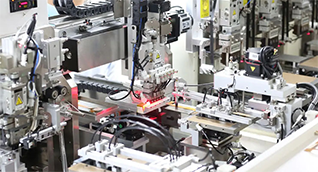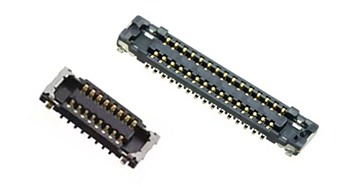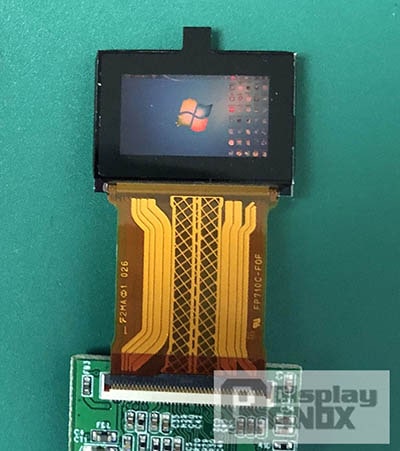
(Sony Micro OLED with 3000 cd/m2)
Compared with VR applications, AR (Augmented Reality) displays require high brightness and contrast. More OLED (organic LED) Through an ingenious combination of enhancements, the SONY Semiconductor solution increases the brightness of the Micro OLED screen by three times while maintaining the same service life. As a result, these displays are now also suitable for the fast-growing AR market.
OLED (Organic light-emitting diodes) have made great strides in recent years. OLED are light-emitting thin-film components made from organic semiconductors. They are found their way into more and more new applications, including near-eye (NTE). These include electronic viewfinders (EVFs) and head-mounted displays (HMD). The HMD is used in virtual reality (VR) and augmented reality (AR) applications, as well as systems that combine a user's natural perception with artificial, computer-generated perception (mixed reality, MR).
In principle, a variety of technical approaches can be used on NTE applications. OLED have been popular in EVFs and VR for some time, but they lacked the brightness required for AR. One of the methods for generating high-brightness images is digital light processing (DLP). This projection technology is developed by Texas Instruments, and uses micro electro mechanical systems (MEMS) in the projection path. It creates an image by reflecting light from a rapidly repositioned micromirror. Another method is to use LCD (liquid crystal display) or LCoS (silicon-based liquid crystal). But even the latest LCoS models can't reproduce full dark values because of their inherent light-blocking display structure. Black tends to be a dark gray.

The Significant Advantage of OLED
In recent years, manufacturers such as SONY Semiconductor Solutions have made significant improvements in optimizing Micro OLED screens to optimize AR applications, where high brightness, high contrast, and low power consumption are essential. OLED displays have been commonly used in NTE applications for many years. Now, with a significant increase in brightness, it`s time for AR. Today, they are seen as a true alternative to DLP and LCoS technologies.
Micro OLED screens provide ultra-high resolution and high brightness at a tiny display size. Due to its low power consumption, small size, and simplified control electronics, Micro OLED screens are well suited for small, energy-efficient embedded systems. Micro OLED screens are equipped with dedicated optics lens to zoom up tiny display surfaces and are easily integrated into NTE and projection applications.
The Micro OLED screen generates images very fast, so the motion looks very smooth (Figure 3). Due to the high resolution, the view is very sharp with ultra-high contrast.

In comparison with LCoS technology, OLED displays response time is in the microsecond range. Generally speaking, they are more than 1,000 times faster than LCoS displays. Regarding contrast, the difference between the light and dark areas of the image, modern Micro OLED screens have a ratio of 100,000:1, while LCoS displays have a ratio of 150:1.
OLED Displays maintain high color fidelity even at low gray levels. Since no backlight is needed, their brightness is achieved through low power consumption. Low temperatures do not cause problems, while LCoS may start to appear "sluggish" as their response time slows down below -10 °C. OLED also has the advantage of high pixel density and high resolution. For these reasons, OLED displays are increasingly replacing the widely used LCoS technology (see Figure 4).
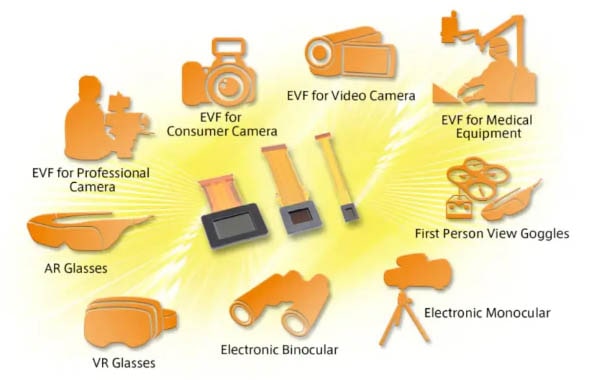
However, OLED screens are generally inferior to LCoS in terms of the maximum brightness achievable. OLED displays may also suffer from the well-known "aging" problem, in which adjacent pixels age and exhibit different brightness properties due to repeated display of the same screen content for a long time period. This raises a question mark about their applicability, such as for industrial applications with a long product life cycle. However, thanks to the latest developments in Micro OLED screen technology. These include modern features such as SONY's semiconductor solution "orbital" feature, but current OLED devices also usually have a longer service life and higher optical output coupling efficiency.
Challenges and Solutions for EVF and VR
The EVF and HMD space for VR applications is limited. Therefore, the developers value the overall size of the small displays. To expand the field of view while maintaining the same format, it makes sense to increase the resolution by reducing the pixel spacing. Sony's second-generation Micro OLED screen has a pixel spacing of 7.8 μ m (3,300 PPI). The manufacturer has now reduced this distance to 6.3 μ m. This implies a pixel density over 4,000 ppi and therefore a higher resolution at the same size.
Adjusting the emission structure by color filter results in higher emission efficiency, which means a longer lifetime of OLED. In the latest OLED manufacturing process, the color filters are directly embedded in the silicon substrate. This type of On-chip Color Filter (OCCF) array results in a smaller distance between the color filter and the luminous layer. This greatly reduces the possibility of photon crosstalk. It also improves the angle because the filter is now closer to sub-pixels. This expands the radiation angle and thus the angle (see Figure 5).
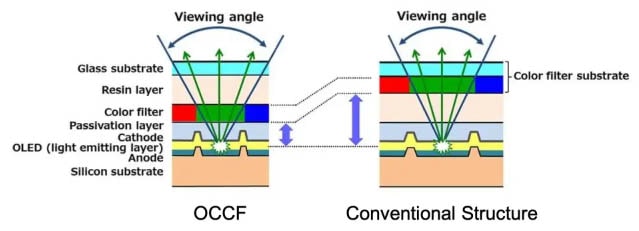
VR developers are using these progressive, and get a very good result by using the latest Sony Micro OLED screens. A typical 0.5-inch microdisplay used for VR applications is the ECX339A. UXGA, with a resolution of 1,600 x 1,200 pixels, frame rate of 120 fps, and contrast ratio of 100,000:1, is ideal for VR applications. The small display has a minimum pixel spacing of 6.3 μ m and a pixel density of up to 4,032 ppi. Its maximum brightness can reach 1,000 cd/m2 which is ideal for VR, but not for AR. However, there are good alternatives.
Challenges And Solutions For AR
In AR applications, it is very important that the information layer displayed in wearable devices is not only rich in contrast, but also seamlessly integrated with the real environment. Micro OLED The screen must be able to display these superimposed images completely transparently without color interruption (see Figure 6). AR applications also require wearable devices with a brightness of more than 1,000 cd / m2. This means that the nominal value of the OLED microdisplay must be at least 3,000 cd/m2 to account for the transmission loss during the projection. As a result, Sony Semiconductor Solution is keen to further optimize the microdisplay brightness.
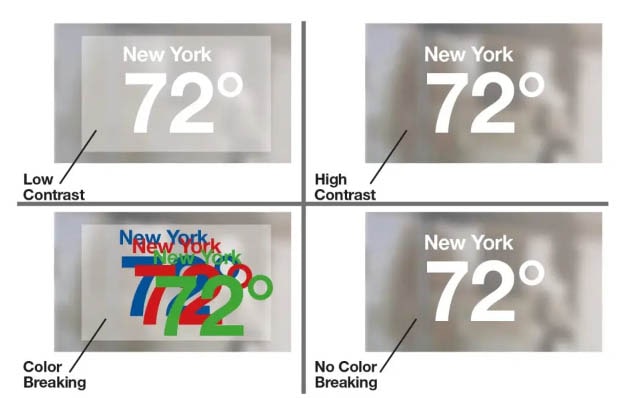
The need for higher luminosity values has led to a change in the lithography process. One technique borrowed from the sensor is to apply specially shaped (hemispherical) microlens directly to a color filter in a glass substrate. In the light output from each pixel, these microlenses focus the light, passing it cleanly through the filter in the red, green, or blue wavelength range without photon crosstalk. This increases the brightness by 1.8 times and prevents color distortion even at large view changes of + / -50° (see Figure 7).
In addition, the Sony semiconductor solution has achieved significant improvements in optical output coupling by selecting new cathode materials. The highly transparent and conductive zinc oxide alloy has proved more effective instead of the magnesium silver alloy. For example, at a wavelength of about 450 nm, this increases the coupled light intensity by approximately 1.6 times.
Because the change of the cathode material has different effects on different wavelengths, the transmission characteristics of the color filter must be adjusted accordingly. Over the entire spectral range, the change of the cathode material increased the optical coupling by 1.3 times.
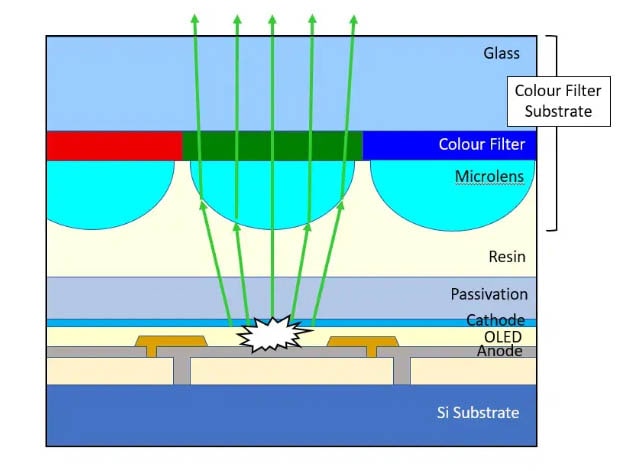
The New OLED Modules Benefit AR Applications
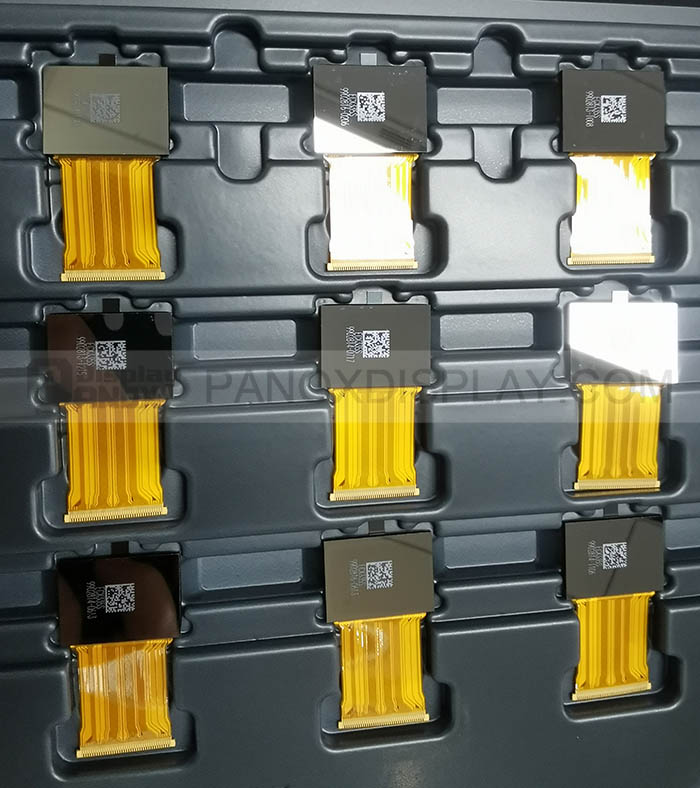
An example of the successful implementation of the described enhancements is the new Sony ECX335S OLED module. It has been in mass production since 2020. Provide a peak brightness of 3,000 cd / m2 and are particularly suited for AR applications. The high contrast degree of the OLED microdisplay makes the additional information layer appear seamless and ensures a "realistic" AR experience.
ECX335S offers an unparalleled combination of full HD resolution with excellent brightness at 3,000 cd/m2. With a very small overall size and a 100,000:1 contrast ratio, the module will continue to drive innovative AR solutions. This example illustrates that OLED microdisplays are being used for NTE applications and increasingly for demanding AR applications.













